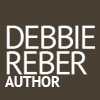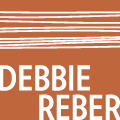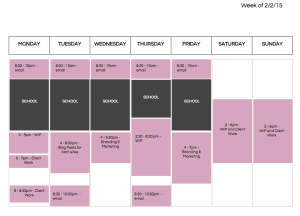 You know how difficult re-entry into everyday life can be following a lengthy holiday, especially one where you felt transformed or were truly able to disconnect from everyday realities because you were so immersed in the experience you were in?
You know how difficult re-entry into everyday life can be following a lengthy holiday, especially one where you felt transformed or were truly able to disconnect from everyday realities because you were so immersed in the experience you were in?
That’s kind of how I feel every time I wrap up a huge writing project. Because I’ve been so focused on one big goal for so long, I struggle to re-enter “regular” life” and create new patterns and rhythms. All of that to say I’m still feeling a bit out of sorts post Doable launch.
But before I get into how I’m tackling my creative disorientation, I’ll let you know how I did with my goals from last week:
- Get ORGANIZED on my various projects and initiatives and come up with a 3-month plan / map — YES
- Write a blog post for author community, continuing my behind-the-scenes look at Doable — YES
- Continue filling out my lists of main themes, key points, and title brainstorm words for the WIP and do the beginnings of an OUTLINE — YES
- Come up with another plan for my Doable interview series (Skype is being troublesome) and set up a plan for continuing — WORKED ON THIS A BIT
- Choose ONE of my big social media tools to put energy into (Pinterest, SEO, etc.) — YES… Goodreads and a bit of SEO
In today’s post, I’ll start by sharing my strategy for getting clear, centered, and organized on all my writing projects, and then I’ll give you the update on the work-in-progress because, as I mentioned last week, I do have a plan!
WRITING PLAN & ORGANIZATION
Now that the “urgency” of my book launch has passed, I feel like I have time to tackle a few big-picture projects I’ve been putting off, come up with a thoughtful ongoing promotional strategy for my books, as well as dedicate substantial time developing my WIP.
The problem is, I’ve been spending a lot of time mindlessly zoning out on social media and squandering away precious work time. Normally I’d take advantage of every free moment, whipping out my list of launch items to check-off and forge ahead. Now, without that core project to dwell on, I’m floundering. Don’t get me wrong…I’m all for a little down time between projects, but I was starting to feel uninspired as a whole.
To remedy that, this past weekend I created a weekly planner.
Here’s what I did:
- I wrote out a list of the core projects I wanted to focus on for the upcoming week
- I created a 7-day “calendar” marking the actual blocks of time I have available for work, including specific starting and stopping times
- I plugged my list of projects into the weekly “calendar” based on the length of available blocks of time
- I printed out the schedule and wrote in the specific tasks I want to tackle during the project blocks
Here’s what the schedule for this week looks like. Two days into the plan, so far so good (note: this image doesn’t include the handwritten tasks…just the project blocks of time). [CLICK ON THE IMAGE TO ENLARGE]:
By the way—if you’ve been following this blog for a while, perhaps you’re noticing that every month or so I come up with a new plan or approach for getting things done. Yes…that’s exactly what’s happening.
My philosophy is, use an approach until it stops working, and then come up with a new one.
I think many people have this idea that a writing routine or time management strategy has to be a fixed plan and that if we can’t stick to it then there’s something wrong with us.
I see it differently.
The way I see it, we’re always evolving and changing, and so are our creative needs, interests, and habits.
The best bet for moving through these changes while maintaining a productive creative life is to be flexible and curious about what might work next.
That’s my story and I’m sticking to it.
UPDATE ON THE WORK-IN-PROGRESS
After months and months of working on my new writing project without knowing exactly how it was all going to come together, I’m happy to say that I finally have a plan, both for how I envision the book and for how I am going to proceed in the coming months.
This plan is not written in stone. And I’d put good money on it changing sometime between now and April. But it’s a plan that is moving me forward and that, to me, is a good plan.
Part 1:
Things came together mostly because I scheduled a phone conversation with my agent and promised to send her a one-page concept sheet for the book in advance of our chat. In doing so, I essentially created the ultimate accountability for me to finally sit my butt down and write out a succinct vision statement for the book.
It took me about 2 (painful) hours to type out a three-page summary, which included a one-and-a-half page “overview” of the book concept, a brief description of the audience and competitive titles, and a partial list of themes for inclusion in the book. And after playing with brainstorming lists of possible titles, I’m happy to report that a solid working title emerged, and one which will serve my writing process well.
So that’s the first part of my “plan”—that I actually have a clear idea about how I want to execute the book, how I see it structured, and where I see it fitting in to the market. Working from a rough blueprint like this is in my wheelhouse…generally speaking, I know how to organize material and turn it into a outline that I can then fill in with the narrative. As I get further along in this process, I’ll share with you exactly how I do it.
One last part of this plan—last week I reached out to Theo Nestor, author of the fantastic book Writing is My Drink and a memoir coach. Because writing memoir is a new genre for me and I’m feeling more than a little outside of my comfort zone, I’ll be periodically checking in with Theo as I move forward to talk through my plan and get her insight on how to ensure what I’m writing is serving my vision for the project. I’ll let you know how that goes.
Part 2:
The other part of my plan relates to how we plan to pitch the book. After discussing at length with my agent, we’ve decided to try to sell the book based on a proposal as opposed to having a completed manuscript. While I would have written a proposal either way (whereas they used to not be necessary, proposals are now becoming expected for memoirs), I like this plan because it gives me time to let the story unfold as I’m writing it, and potentially after I have the book under contract (if all the stars align, that is).
Writing book proposals is something I have a lot of experience with, and I’m confident I can create a compelling proposal that my agent can take out. We hope to pitch the book by early May—it appears I have some writing to do!
In the coming weeks, I’ll shed some light on my process for tackling proposals as I move through the various elements that I’ll need to include.
* WRITING GOALS FOR THE COMING WEEK *
- Refine and email my 3-sheeter on the WIP to Theo for feedback
- Begin creating an “outline wall” in my office for the WIP
- Continue filling out my lists of main themes and key points for the WIP
- Write a blog post for author community, continuing my behind-the-scenes look at Doable
- Explore using Google Hangouts as a tool for my Doable Interview series
- Continue researching SEO and how to tag my blog posts
- Research podcasts I can pitch myself as a guest on for Doable promotion
* * *
I hope you enjoyed this installment of Writer Unplugged! If you aren’t already on my email list, I encourage you to sign up below so you don’t miss any of the series!



